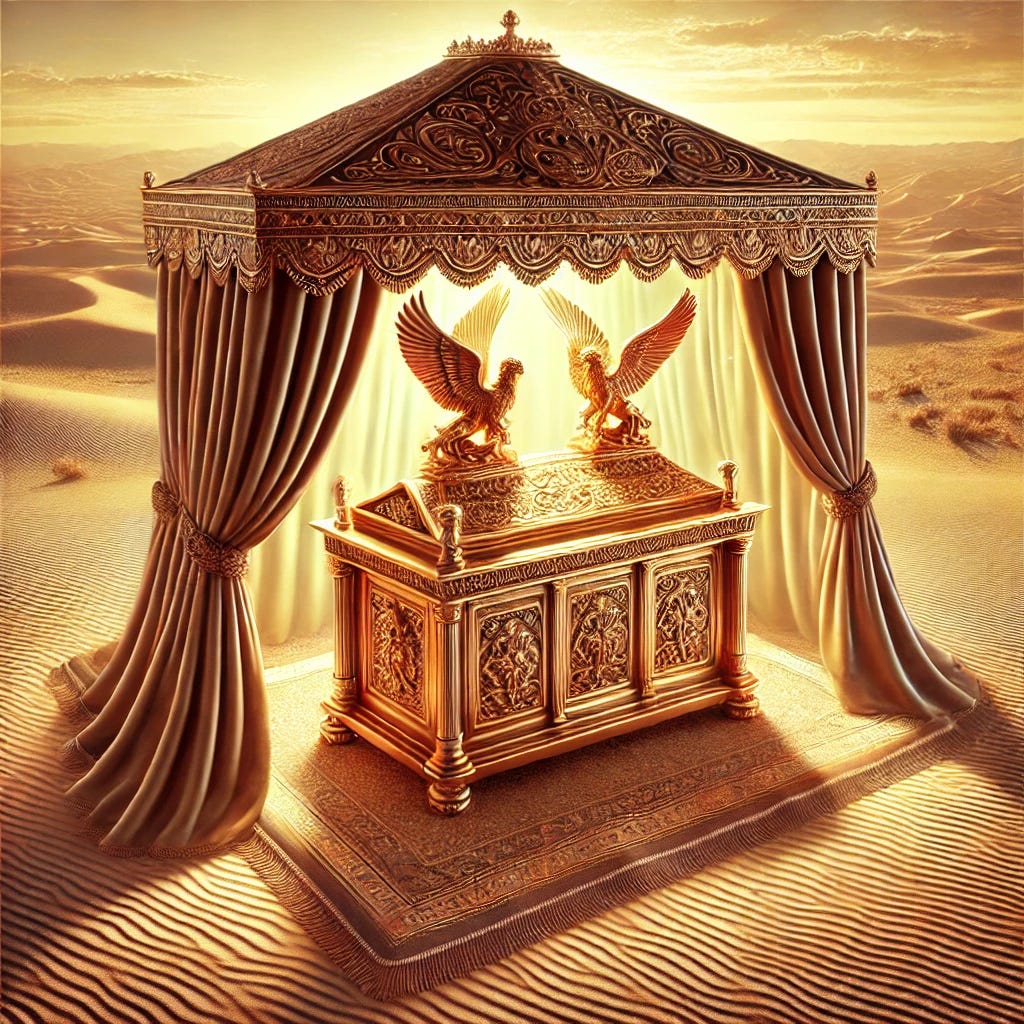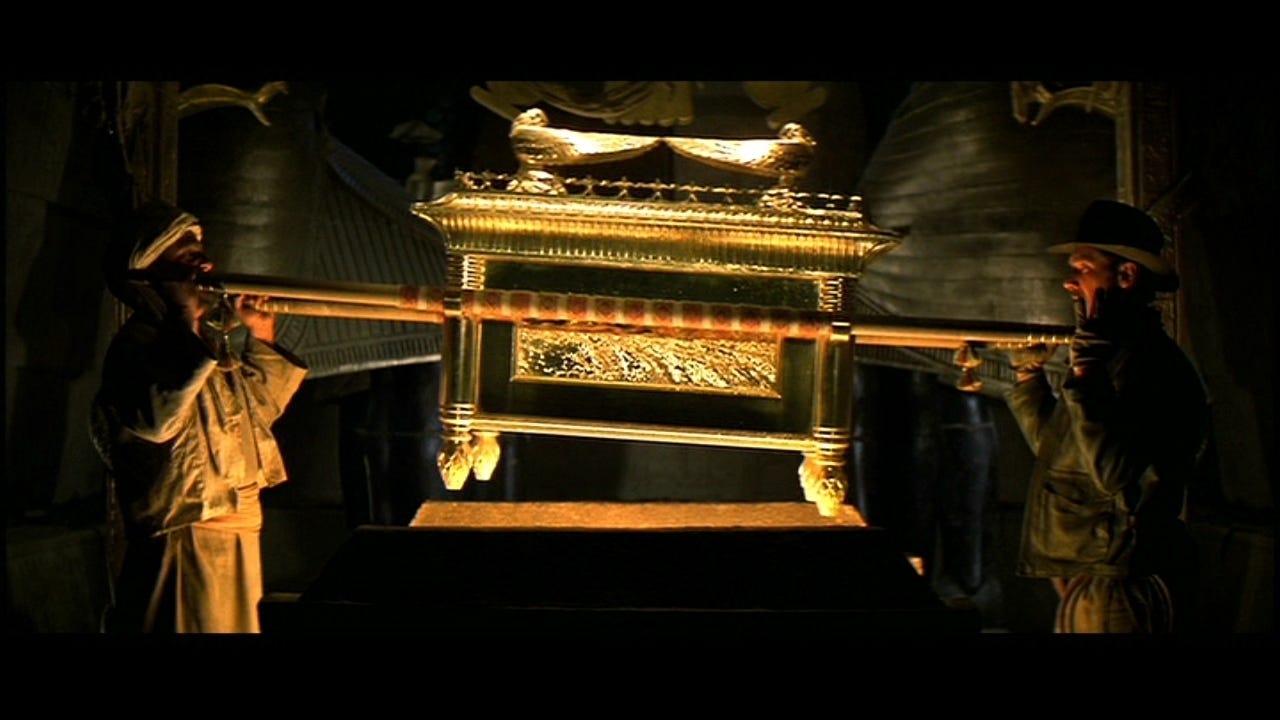The Book of Life:
Torah Lessons in Beauty for a World Consumed in Ugliness
Dedicated to the Memory of Kfir, Ariel, and Shiri Bibas, (Z”L)
Today, I am writing to you from Jerusalem, as the entire Jewish nation stands in mourning over the tragic death of three beautiful and innocent souls.
But I do not come here to write about their deaths, the depravity that caused them, or the silence of my peers in response.
Rather, I come to take part in an ancient Jewish tradition, the tradition of learning in the memory and honor of those who have passed.
So I have decided to do something I have never done – write a Dvar Torah on this week’s Parasha, the section of the Torah that we read each week.
Parasha Terumah: The Artist’s Parasha
This week’s Parasha is Terumah. It begins the Torah’s description of the Mishkan, the tabernacle, and it goes into incredible detail to describe how it was built and what materials were used to build it.
Many people consider this to be the beginning of the boring part of the Torah.
Compared to the narratives of Genesis and the beginning of Exodus, this lengthy description of what is, essentially, a construction project, seems extremely dry.
But this is one of my favorite sections in the Torah – because it is when we learn about the importance of material beauty and art.
This is the artist’s parasha.
Terumah is the first of five parashiot that deals with the details of the Mishkan, the mobile center of Jewish life that no one has used in over 3000 years and that was used by only a handful of people… ever.
The Torah contains 54 parashiot, which means that the building of this thing takes up roughly 10% of the entire Torah.
By contrast, the whole creation of the universe, the seven days of creation, takes up less than half of one Parasha.
So why would the Torah spend so much time discussing the building of a physical object?
Clearly, we are meant to learn something terribly profound from its construction.
The Meaning of the Mishkan
In order to understand the meaning of this Parasha, we need to understand one of the most beautiful lines in the Torah that appears in it:
וְעָ֥שׂוּ לִ֖י מִקְדָּ֑שׁ וְשָׁכַנְתִּ֖י בְּתוֹכָֽם׃
And let them make Me a sanctuary, that I may dwell among them.
Firstly, it is important to note that there is a grammatical issue in this line. It says, “And let them make Me a sanctuary, that I may dwell among THEM.”
It should say, “that I may dwell IN IT.”
That is, if the object to which the line refers was the sanctuary.
The rabbis teach us that this is a misreading of the line. The
“Them” to which the line refers is to the builders of the sanctuary, not to the sanctuary itself.
By making a sanctuary for G-d, His divine presence will dwell among the Israelites, the people who built that sanctuary.
But it goes much deeper than that.
The Shelah HaKadosh and the Inner Sanctuary
You can also read this sentence as though it is reflexive, reading, “And let them make themselves into a sanctuary for Me, that I may dwell among them.”
Read in this way, the purpose of the extended description of the Mishkan’s beauty takes on a whole new meaning.
The Shelah HaKadosh (Rabbi Isaiah HaLevi Horowitz), the great 16th and 17th century Kabbalist, teaches that this verse is a call for each of us to transform ourselves into a Mishkan, a place where holiness resides.
Understanding these lines in this way, the entire Parasha becomes a description of how much beauty one should invest into their own spiritual practice, into constructing one’s self as a beautiful sanctuary for G-d.
Building Ourselves with Beauty
When we build the sanctuary of our own spiritual practice, we should fill that sanctuary with gold and silver, fine silks and leathers, and it should be built with only the finest of woods.
The amount of time the Torah dedicates to describing the physical beauties of the sanctuary is meant to tell us how much time and effort we should place into building the spiritual beauty within ourselves.
The Aron Hakodesh, the Ark of the Covenant, (as made famous by Raiders of the Lost Ark), was built with beautiful wood. On the outside of that wooden box, was another box made of solid gold.
And, on the inside of that wooden box, was another box, also made of solid gold.
The wood, taken from the living, natural world, represents our flesh. Flesh that lives, and flesh that dies.
But the inside of the box was made of solid gold.
So too we should build our souls out of solid gold.
For our souls are more valuable than anything else we could possibly fathom.
And the exterior of our flesh, what is outside of our flesh, (not the flesh itself), should be made of solid gold as well.
Gold Inside and Out
So how do we understand what it means for us to be made of gold, on the inside and out, from this Parasha? Through the understanding of the interior and exterior boxes.
The exterior box represents how we show ourselves to the world – let others see the beauty that we bring into the world.
Not physically, but spiritually.
The exterior box is how we treat others, how we engage with strangers, how we interact with the world around us.
It is not enough, says the Torah, that our inner-selves be beautiful; our outer-selves must be as well.
This is how we make ourselves into a sanctuary for Hashem.
Within the sanctuary, we cultivate a beautiful spiritual life.
And, by cultivating that beautiful inner life, we can then go out into the world and spread that beauty through our actions.
This is what it means to be built of solid gold, both on the inside and on the outside.
Consider how much time people in the modern world spend cultivating their external image, the cultivation of their online personas, their social identities, and their physical appearance.
Everyone wants to appear to be living a beautiful life.
Imagine if they spent that time cultivating their external behaviors instead. Imagine if, instead of spending time creating pictures of themselves looking good, they occupied themselves with doing good instead. Imagine.
Investing Time & Effort: The Spiritual Art of Building Beauty
However, it is important to remember that this is not a quick and easy process.
This is a process that required 10% of the Torah to describe. And since the Torah is the Book of Life, we can extend the metaphor to say that, in order to do this, we need to dedicate 10% of our lives to the creation of ourselves as a beautiful sanctuary.
This means collecting the materials, determining the dimensions, learning the building plans, understanding the building plans, and, finally, putting all of these things together.
It could seem like a daunting process, but that is why this is the artist’s Parasha.
Only an artist can be so meticulously dedicated to detail as to build something of such profound beauty.
Consider the most beautiful piece of art you have ever seen, the most beautiful building you have ever observed, the most beautiful symphony you have ever heard.
Before any of the artists who made those things were able to make them, they had to invest a tremendous amount of time and effort into learning their craft.
So too, must we invest time and effort into the crafting of ourselves.
The Final Call: Becoming a Sanctuary
Anyone can splash paint upon a page, just like anyone can live a life in this world.
But only those who truly invest in the artistic endeavor can make something truly beautiful.
So why would you not invest that time into yourself and your soul?
Could there anything be more important than the cultivation of your inner and outer selves?
How many times have you heard people say, “my body is a temple?”
So why not make your soul into a sanctuary?
Your soul is a gift from G-d – you should cherish it as much as He does.
But cherishing something like that is daunting – that’s why he gives us the blueprints for how to do it in this week’s Parasha.
And, not only that, but he makes us a promise.
If we make ourselves into a sanctuary, then His presence will dwell among us.
It can be so hard in the modern world to appreciate ourselves. In a world that constantly reminds us of our flaws, it can be almost impossible to think of ourselves as being made of anything but clay, let alone gold, solid gold.
Harder still to imagine that G-d would wish to dwell among us, flawed as we are.
But every human being is made of solid gold, on the inside, and the outside, and it is up to us to cultivate that understanding and beautify the sanctuaries within ourselves.
And, once we do that, G-d’s divine presence will dwell not only among us, but within us.
And this is the beauty of Torah – it is the beauty of life.
So we conclude, as always:
Spread Love, Spread Light,
Am Yisrael Chai
~
If you like this work and you wish to spread The Zionist Voice, please consider sharing this substack with your friends, colleagues, and acquaintances.
Only light can banish darkness, and only truth can banish lies.
Thank you for your support.






🧡🧡🧡